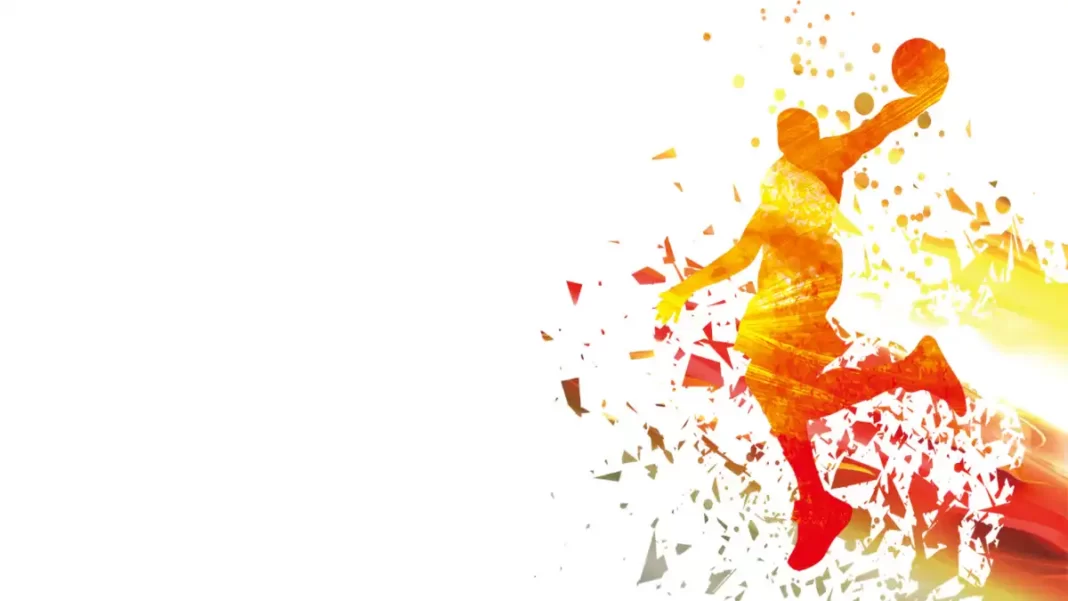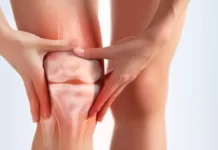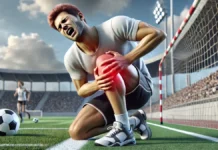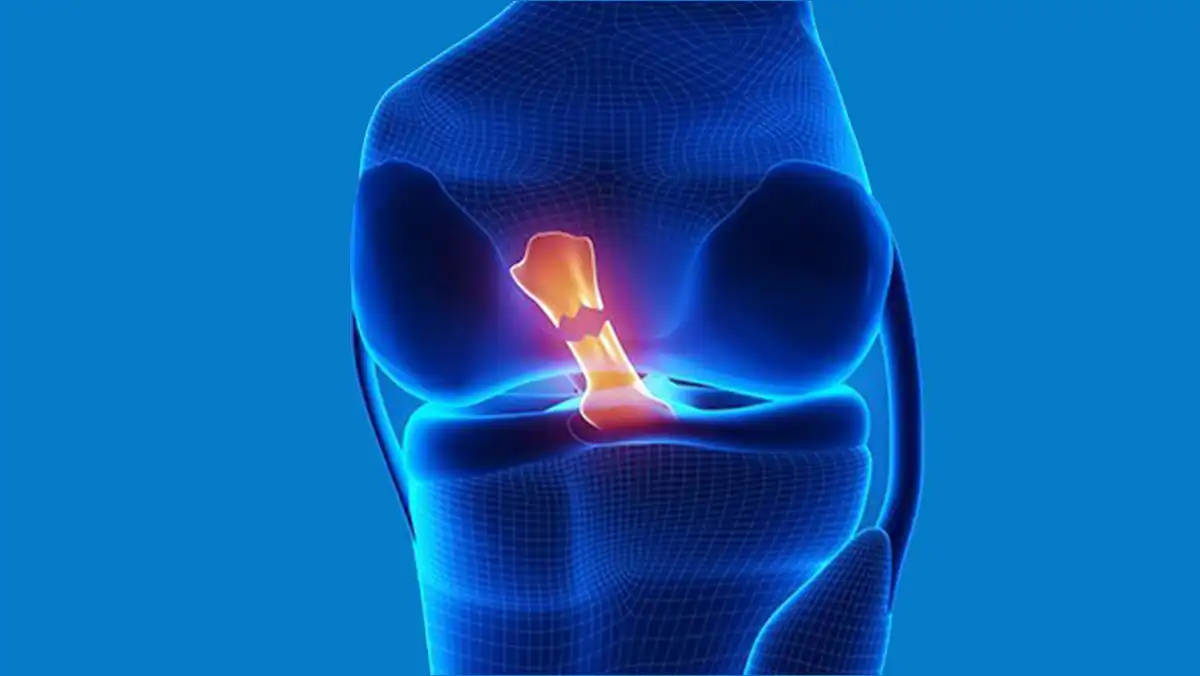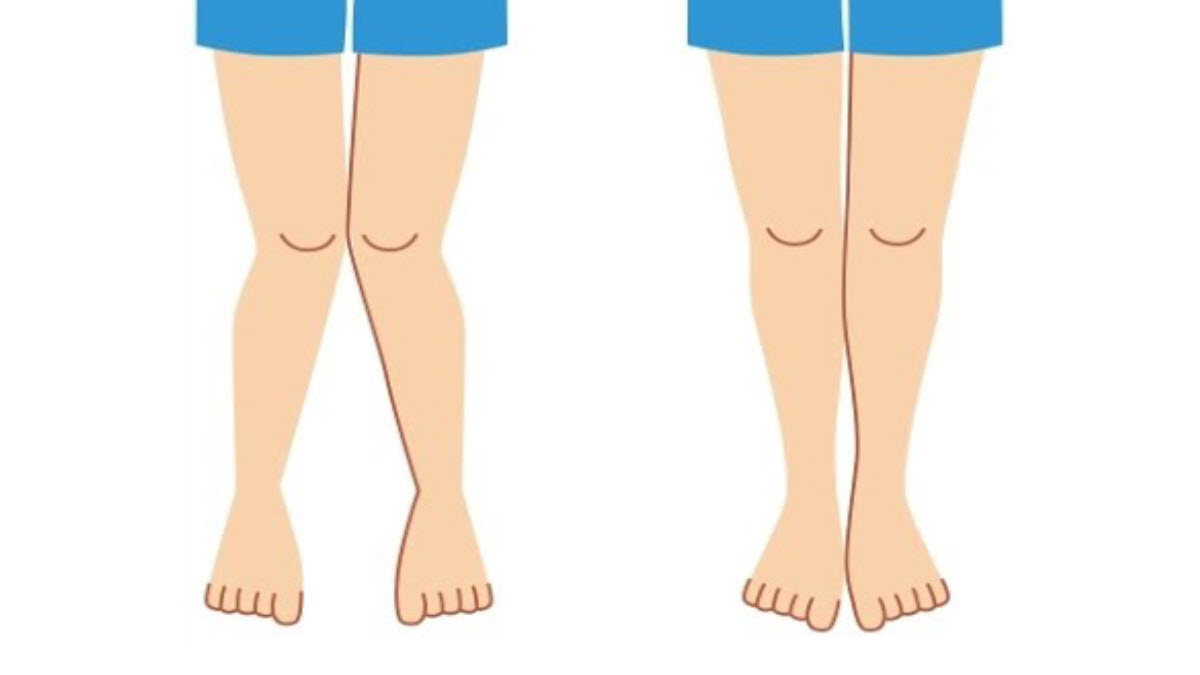Introduction
Imagine a busy gym scene where motivational shouts mix with the sounds of sneakers bouncing on the floor. At the center of all this excitement was Fred, nicknamed “The Jumper” by his friends. Fred was a true sports enthusiast, and nothing thrilled him like acrobatic jumps. However, one day his knee decided to play an unexpected trick.
Fred, with all his energy, launched into a series of gravity-defying jumps. The other athletes admired it, a true living spectacle of what they affectionately called the “Jumper’s Knee”. Fred, absorbed in his acrobatics, had no idea that his knee had other plans.
At the top of a somersault, Fred’s knee suddenly made a quiet “crrrrac” sound, like a miniature fireworks display. It was accompanied by a hint of pain, but Fred, driven by adrenaline, paid no attention to this subtle sign. It was the start of an unexpected adventure for the “Jumper’s Knee”.
Over the next few days, Fred began to feel strange sensitivity in his patellar tendon. It was as if the tendon had decided to put on its own display of pain with every flexion of the knee. Intrigued and slightly concerned, Fred decided to seek medical help, wondering if he had mistreated his “Jumper’s Knee”.
The specialist, an expert in the world of knees, listened attentively to Fred’s story. He looked professionally at the knee, almost as if he were peering into an unsolved mystery. “Patellar tendinopathy,” he finally said, explaining that the excessive jumping had caused lacerations of the patellar tendon.
Fred’s “Jumper’s Knee” was now the center of medical attention. The doctor, with a hint of humor, told Fred that perhaps he had been a little too ambitious in his acrobatics. “Moderate jumps are also very good for the knees,” he added with a wink.
Treatment for Fred’s “Jumper’s Knee” involved rest, cold compresses and rehabilitation exercises. Fred, a little disappointed at having to pause his acrobatic show, nevertheless followed the specialist’s advice. He spent a few weeks pampering his wayward knee.
During this period of rest, Fred began to enjoy a new perspective on sporting activities. He understood that even tendons have their limits, and that it was better to listen to the subtle signals that the body sends. It was a lesson learned through the small lacerations of the “Jumper’s Knee”.
The next time Fred ventured into the world of jumping, he took a more measured approach. His knee, grateful for the extra attention, enthusiastically participated in more moderate jumps. Thus, Fred’s “Jumper’s Knee” anecdote became a learning story, combining humor, sportsmanship and a pinch of knee-jerk wisdom.
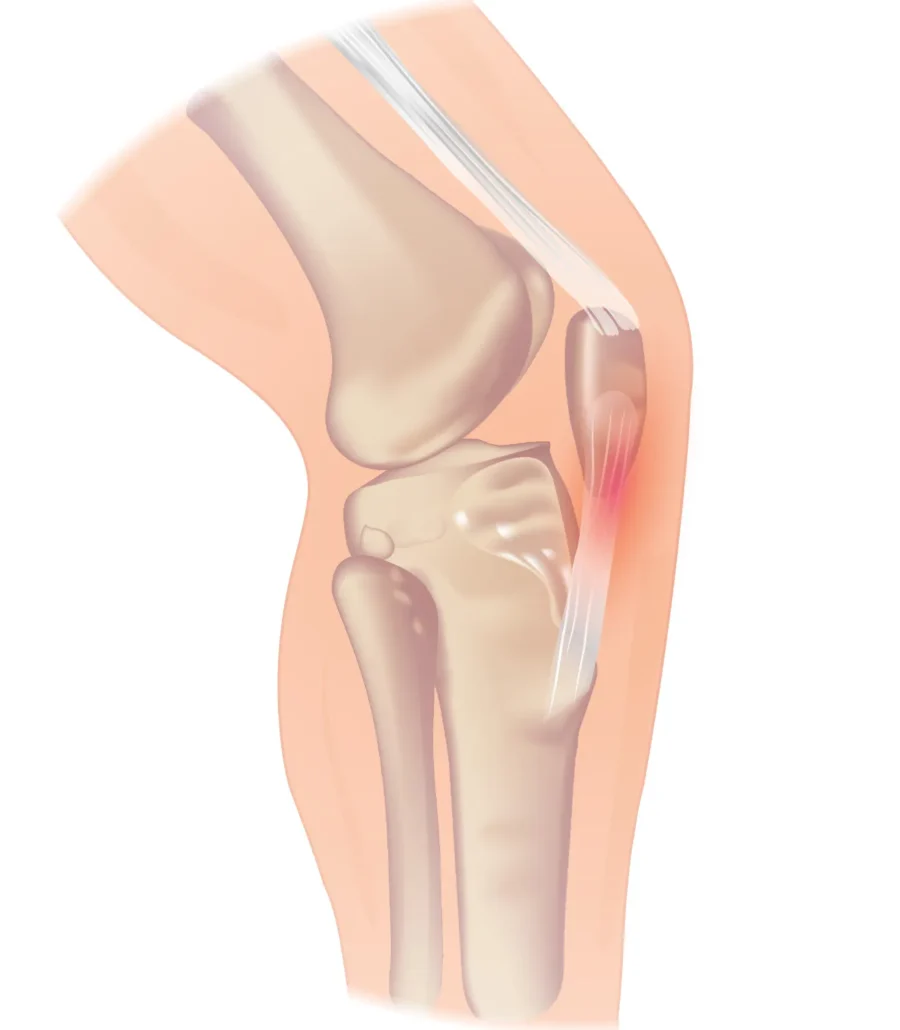
Understanding Patellar Tendinopathy
Patellar tendinopathy, commonly known as “jumper’s knee,” is a condition that affects the patellar tendon, which connects the kneecap (patella) to the shinbone (tibia). This tendon plays a critical role in extending the knee and is essential for activities that involve running, jumping, or squatting. Patellar tendinopathy typically develops gradually and is most common among athletes who engage in high-impact sports like basketball, volleyball, soccer, or track and field. Understanding the condition’s definition, overall impact, and causes is crucial for managing and preventing it.
Definition and Overview
Patellar tendinopathy refers to the degeneration and inflammation of the patellar tendon. This condition differs from tendonitis, which primarily refers to acute inflammation, as tendinopathy describes a more chronic, degenerative process. Over time, repeated stress on the patellar tendon leads to microtears and the breakdown of collagen fibers, resulting in pain, stiffness, and impaired function.
In its early stages, patellar tendinopathy presents as mild discomfort or pain, typically occurring during or after activities that involve knee extension. Left untreated, the condition can worsen, leading to constant pain, reduced athletic performance, and a prolonged recovery period. In severe cases, complete rupture of the patellar tendon can occur, though this is rare and usually associated with extreme overuse or a lack of proper treatment.
Patellar tendinopathy is often classified based on the severity of symptoms, ranging from pain experienced only after intense physical activity to persistent, debilitating pain that occurs during everyday tasks.
Causes of Patellar Tendinopathy
The primary cause of patellar tendinopathy is repetitive stress on the patellar tendon. Overloading the tendon without adequate recovery time leads to microdamage, which eventually accumulates, causing pain and dysfunction. Several factors can contribute to the development of patellar tendinopathy, including:
- Overuse and Repetitive Movements: Patellar tendinopathy is most commonly caused by repetitive movements that put stress on the knee joint, such as jumping, running, or rapid directional changes. Athletes, particularly those involved in sports that require frequent jumping or sprinting, are at a higher risk of developing this condition. Repeatedly loading the patellar tendon without allowing sufficient time for recovery can lead to chronic degeneration of the tendon fibers.
- Muscle Imbalances and Weakness: Muscle imbalances around the knee joint, particularly in the quadriceps and hamstrings, can contribute to patellar tendinopathy. The quadriceps muscles are responsible for extending the knee, while the hamstrings act as stabilizers. If the quadriceps are overdeveloped compared to the hamstrings, the patellar tendon can experience excessive tension during physical activities, leading to overuse injuries. Weak or tight hamstrings can also contribute to improper knee mechanics, further increasing the risk of tendinopathy.
- Poor Biomechanics: Abnormalities in body mechanics, such as flat feet (overpronation), poor posture, or improper running or jumping techniques, can place undue stress on the patellar tendon. For example, landing awkwardly after a jump or running with incorrect foot alignment can increase the load on the tendon, leading to microtears over time. Poor hip and ankle mobility can also disrupt the kinetic chain, affecting how force is distributed through the knee and contributing to tendon stress.
- Inadequate Warm-Up and Stretching: Failure to properly warm up before engaging in physical activities can increase the risk of patellar tendinopathy. Warm-up routines that include dynamic stretching help increase blood flow to the muscles and tendons, making them more pliable and less susceptible to injury. Skipping a proper warm-up can cause the tendon to absorb more shock during high-impact movements, leading to microdamage.
- Sudden Increases in Activity Intensity: Increasing the intensity or frequency of physical activities too quickly can overwhelm the patellar tendon, particularly if the tendon has not been conditioned for such loads. Athletes who abruptly increase their training volume, intensity, or frequency without allowing for adequate recovery are at a greater risk of developing tendinopathy.
- Age and Degeneration: Age is another contributing factor to patellar tendinopathy. As people age, tendons naturally lose some of their elasticity and become more susceptible to injury. Degenerative changes in the tendon, such as a decrease in collagen production, can make the patellar tendon more prone to microtears and chronic injury.
- Tight or Inflexible Muscles: Tight muscles, particularly in the lower body, can increase the tension placed on the patellar tendon. For instance, tight quadriceps or calf muscles can limit the knee’s range of motion, leading to altered mechanics that increase tendon strain. Incorporating regular stretching exercises to improve flexibility can help reduce this risk.
Symptoms and Classifications
Patellar tendinopathy typically progresses through distinct stages, with symptoms varying depending on the severity and chronicity of the condition. Understanding the difference between early and advanced symptoms is crucial for both patients and healthcare providers to identify the condition early and prevent it from worsening.
Early Symptoms
In the early stages of patellar tendinopathy, symptoms are usually mild and may only appear during specific activities that put stress on the patellar tendon. These early warning signs are easy to overlook or dismiss as minor aches, especially for athletes or active individuals.
Key Early Symptoms:
- Pain during activity: The hallmark symptom of patellar tendinopathy is pain located at the front of the knee, right over the patellar tendon (below the kneecap). Initially, this pain is intermittent and only occurs during high-impact activities such as running, jumping, or climbing stairs. After the activity, the pain may subside quickly, leading people to assume that it’s a temporary issue.
- Tenderness upon palpation: Pressing on the patellar tendon can reveal tenderness. In the early stages, the tenderness may not be constant, and individuals may only feel discomfort when pressure is applied directly to the tendon.
- Stiffness after rest: After a period of inactivity, such as sitting for a long time or waking up in the morning, some individuals report stiffness in the knee. This stiffness usually subsides after moving around or warming up the knee.
- Minimal impact on daily activities: At this stage, the symptoms may not interfere significantly with daily activities. However, individuals may start to feel discomfort during sports or other forms of high-intensity physical activity.
Advanced Symptoms
If left untreated, patellar tendinopathy can progress to a more severe, chronic condition. As the tendon’s collagen fibers continue to degenerate, the symptoms become more prominent and can severely impact both athletic performance and daily life.
Key Advanced Symptoms:
- Constant pain: In advanced stages, the pain becomes more constant and may persist even during rest. Unlike early-stage tendinopathy, where pain is activity-specific, individuals may experience discomfort during simple movements such as walking or sitting with the knee bent for extended periods. The pain can become sharp, limiting mobility.
- Morning stiffness: Advanced tendinopathy is often associated with significant stiffness in the knee after periods of inactivity. Morning stiffness becomes more prolonged, and it can take a longer time to “warm up” the knee to a functional level. Even simple activities, such as standing up or walking, may be painful after rest.
- Thickening of the tendon: Over time, the tendon may become visibly thicker as the body attempts to repair the chronic damage. This thickening can sometimes be felt or seen during physical examination, often accompanied by increased tenderness.
- Decreased athletic performance: In the advanced stages, athletic performance declines significantly. Activities that involve running, jumping, or cutting movements become increasingly difficult due to pain and reduced strength in the knee. Some individuals may also develop compensatory movement patterns, placing stress on other areas of the body and increasing the risk of secondary injuries.
- Pain during daily activities: As the condition worsens, daily activities such as climbing stairs, standing up from a seated position, or even walking can cause significant discomfort. This stage often leads to individuals seeking medical treatment, as the symptoms start to interfere with basic functions.
- Limited range of motion: In advanced stages, the range of motion in the knee may be limited, either due to pain or the physical changes in the tendon. Stiffness, combined with pain, can make it difficult to fully extend or flex the knee without discomfort.
Classification by Severity
Patellar tendinopathy is often classified based on the severity of symptoms and the impact on physical activity. The most commonly used classification system is the four-stage system proposed by Blazina et al.:
- Stage 1: Pain only after activity, with no interference in performance.
- Stage 2: Pain during and after activity, but still capable of performance.
- Stage 3: Prolonged pain during and after activity, with decreased performance.
- Stage 4: Complete rupture of the tendon, requiring surgical intervention.
The classification system helps guide treatment options, from conservative approaches like osteopathy in the early stages to more aggressive treatments, such as surgery, in advanced cases.r Tendinopathy
Diagnosis Process for Patellar Tendinopathy
Diagnosing patellar tendinopathy requires a combination of clinical examination, imaging techniques, and differential diagnosis to rule out other conditions. Below is a breakdown of the main steps involved in the diagnosis process:
Physical Examination
A thorough physical examination is the first step in diagnosing patellar tendinopathy. During this process, the healthcare professional typically focuses on identifying the classic symptoms of the condition, such as anterior knee pain localized to the patellar tendon, especially during activities that involve jumping, running, or climbing stairs.
Key Components of the Physical Examination:
- Patient History: The healthcare provider begins by taking a detailed patient history, including information about the onset of symptoms, intensity, and activities that exacerbate the pain. Athletes or individuals involved in high-impact sports are at higher risk, and their activity history provides critical insights.
- Inspection and Palpation: The healthcare professional will inspect the knee for signs of inflammation, swelling, or visible deformities. Palpation of the patellar tendon is crucial. The patient may experience tenderness when the practitioner presses on the tendon just below the kneecap.
- Functional Tests: Functional movements like squatting, lunges, or resisted knee extensions may be used to assess the level of pain and mobility. Pain during these movements, particularly at the bottom of the squat or when standing up, is indicative of patellar tendinopathy.
- Quadriceps and Hamstring Assessment: Strength and flexibility in the quadriceps and hamstrings are evaluated, as tightness or weakness in these muscles is often associated with knee issues. A tight quadriceps muscle can increase the load on the patellar tendon, while weak hamstrings can affect the overall balance of the leg muscles.
This examination is aimed at identifying not just the location of pain, but also how much stress the patellar tendon is undergoing during various physical activities. In some cases, the healthcare provider may also assess the biomechanics of the lower limb to identify contributing factors such as poor foot alignment or improper running techniques.
Imaging Techniques
Imaging is often used to confirm the diagnosis of patellar tendinopathy, particularly when the physical examination is inconclusive or the symptoms are chronic. The two most common imaging modalities are ultrasound and magnetic resonance imaging (MRI).
Ultrasound:
Ultrasound is a cost-effective, non-invasive imaging technique that allows real-time visualization of the patellar tendon. During the ultrasound, the healthcare professional will look for characteristic changes such as:
- Thickening of the patellar tendon.
- Hypoechoic areas (regions that appear darker on the ultrasound), indicating tendon degeneration.
- Neovascularization, where new blood vessels form in response to chronic damage, often visible in chronic cases of tendinopathy.
Ultrasound also has the advantage of being dynamic, meaning that the tendon can be assessed in real-time during movement, providing insights into how the tendon behaves under stress.
Magnetic Resonance Imaging (MRI):
MRI is another diagnostic tool used for a more detailed evaluation, particularly in complex cases or when surgery is being considered. MRI can provide a clearer image of soft tissues and is useful for detecting:
- Micro-tears or ruptures in the tendon.
- Advanced stages of tendon degeneration, known as tendinosis.
- Any involvement of surrounding tissues, such as bone marrow edema or fat pad inflammation, which can contribute to or complicate the condition.
While MRI is more expensive and time-consuming than ultrasound, it provides superior detail, especially when ruling out other pathologies.
Differential Diagnosis
The final step in the diagnostic process is differential diagnosis, which involves ruling out other conditions that may present with similar symptoms. Patellar tendinopathy can be confused with several other knee conditions, so this step is crucial for accurate diagnosis and treatment planning.
Common Conditions to Rule Out:
- Patellofemoral Pain Syndrome (PFPS): While both conditions present with anterior knee pain, PFPS is usually associated with pain around or behind the kneecap, rather than localized directly on the patellar tendon.
- Meniscal Tears: A meniscal tear can also cause knee pain, especially during activity, but it is typically associated with mechanical symptoms like clicking, locking, or instability in the knee.
- Osgood-Schlatter Disease: This condition is common in adolescents and involves inflammation of the growth plate at the tibial tuberosity (just below the knee), rather than the patellar tendon itself.
- Quadriceps Tendinopathy: This condition affects the quadriceps tendon above the kneecap, rather than the patellar tendon below it.
Differential diagnosis ensures that the treatment plan addresses the correct underlying issue, preventing unnecessary treatments or interventions.
Treatment Options for Patellar Tendinopathy in Osteopathy
Osteopathic care for patellar tendinopathy involves both conservative and advanced treatments. Osteopaths focus on promoting natural healing through manual therapy and rehabilitation strategies that improve biomechanics, reduce tendon strain, and enhance overall mobility.
Conservative Treatments
- Manual Therapy: Osteopaths use gentle manipulative techniques to improve joint function and relieve tension around the knee, optimizing the body’s self-healing mechanisms.
- Activity Modification: Adjusting or limiting aggravating activities while the tendon heals.
- Eccentric Strengthening Exercises: Exercises that help build strength in the quadriceps, reducing stress on the patellar tendon.
- Stretching and Soft Tissue Techniques: Osteopathic practitioners may employ soft tissue techniques, including myofascial release, to relieve tension in the surrounding muscles and tendons.
- Posture and Gait Correction: Osteopaths often assess and correct any abnormal postures or gait patterns that might be contributing to tendon stress, ensuring proper alignment of the body to prevent further injury.
Advanced Treatments
- Shockwave Therapy: This non-invasive therapy is sometimes used in osteopathic practices to stimulate tissue repair and reduce chronic pain.
- Dry Needling: Some osteopaths utilize dry needling techniques to reduce muscle tension and promote healing in the affected area.
- Referral for Surgical or Advanced Interventions: In cases where conservative treatments fail, osteopaths may refer patients to specialists for surgical or more advanced treatments, such as Platelet-Rich Plasma (PRP) injections or percutaneous tenotomy.
When Referral Is Necessary
In osteopathy, referral to a specialist is necessary if conservative treatments fail to produce improvement within a few months or if symptoms worsen. Advanced imaging (like MRI) may be required for a more detailed assessment if tendon damage is suspected to be severe. Additionally, referral is essential when patients present with a complete tendon rupture or when they require advanced interventions such as Platelet-Rich Plasma (PRP) injections, corticosteroid injections, or surgery. An osteopath will refer patients if these conditions are beyond the scope of manual therapy and rehabilitation strategies.
Frequently Asked Questions
- What is patellar tendinopathy?
- Patellar tendinopathy is a condition of the patellar tendon, usually characterized by inflammation, microtrauma, or degeneration of the tendon.
- What are the typical symptoms of patellar tendinopathy?
- Symptoms include pain at the front of the knee, tenderness of the tendon, stiffness, and sometimes swelling.
- What activities can make patellar tendinopathy worse?
- Activities involving repeated jumping, frequent squatting, or a sudden increase in physical activity can worsen patellar tendinopathy.
- How is patellar tendinopathy diagnosed?
- Diagnosis is based on a clinical examination, medical history, and imaging tests such as x-rays, ultrasound or MRI.
- What treatments are available for patellar tendinopathy?
- Treatments include rest, osteopathy, use of ice, anti-inflammatories, injections, activity changes, orthotics, and in some cases, surgery.
- How long does it take to recover from patellar tendinopathy?
- Recovery varies depending on the severity of the tendinopathy and response to treatment, but can take several weeks to several months.
- Can I do physical activity while treating patellar tendinopathy?
- It depends on the severity of the symptoms. Some activities may be adapted, but it is essential to follow the advice of the healthcare professional.
- Does patellar tendinopathy require surgery?
- Surgery is rarely necessary, except in cases of severe damage or non-response to conservative treatments.
- Can patellar tendinopathy be prevented?
- Preventative measures include adequate warm-up, progressive training, strengthening exercises, and correction of biomechanical risk factors.
- When should I see a healthcare professional for patellar tendinopathy?
- Consultation is recommended in cases of persistent pain, functional limitations, or worsening of symptoms despite self-care measures.
Prevention and Rehabilitation for Patellar Tendinopathy
Preventing patellar tendinopathy and ensuring effective rehabilitation require a combination of lifestyle changes, strengthening exercises, and proper recovery strategies. Here are key approaches:
- Strengthening and Flexibility Exercises: Regularly strengthen the quadriceps, hamstrings, and calf muscles to improve knee stability. Eccentric exercises, where muscles lengthen under tension, are particularly effective.
- Activity Modification: Gradually increase the intensity of sports and exercise routines to avoid overloading the patellar tendon. Incorporating rest days is also crucial to prevent overuse.
- Proper Footwear and Posture: Ensure you use supportive footwear during physical activities and maintain proper alignment of the legs and knees to reduce strain on the patellar tendon.
- Rehabilitation Program: Following an injury, a structured rehabilitation plan involving eccentric exercises, flexibility work, and progressive strengthening is vital. It helps improve tendon healing, restore mobility, and prevent recurrence.
- Regular Manual Therapy: Osteopathic manual therapy can be integrated into both prevention and rehabilitation to address muscle imbalances, improve joint function, and support optimal biomechanics.
Radiographic Findings
In the diagnosis of patellar tendinopathy, radiographic signs can be helpful in assessing the condition of the knee and identifying possible structural abnormalities associated with the condition. However, it is important to note that radiographic signs of patellar tendinopathy can be subtle and may not always fully reflect the severity of symptoms experienced by the patient.
During radiographic examination of the knee of a patient with patellar tendinopathy, several features may be observed. First, osteophytosis, or bone spur formation, may be visible at the lower end of the patella or at the junction between the patella and the patellar tendon. These bone spurs may result from chronic irritation of the patellar tendon and underlying bone in response to excessive stress.
Additionally, a decrease in joint space between the patella and femur may be observed, which may indicate joint wear and tear associated with patellar tendinopathy. This reduction in joint space may be the result of a decrease in articular cartilage or the presence of calcium deposits in the patellar tendon.
In some cases, signs of biomechanical misalignment of the knee may also be visible on x-rays. For example, excessive tilt of the patella laterally, called patellofemoral syndrome, may be observed, which may contribute to the development of patellar tendinopathy by altering the distribution of forces on the patellar tendon.
It is important to note that although radiographic signs can provide valuable information in the diagnosis of patellar tendinopathy, they are not always specific and may not be present in all patients with this condition. Therefore, other imaging modalities such as ultrasound or MRI may be necessary to more accurately assess the status of the patellar tendon and surrounding structures.
- Bone Spur (Enthesophyte): Bony growths, called bone spurs or enthesophytes, may sometimes be visible where the patellar tendon attaches to the patella or anterior tibial tuberosity.
- Thickening of the Patellar Tendon: An x-ray may show thickening of the patellar tendon, indicating a response by the body to chronic strain placed on the tendon.
- Abnormal Patella Position: X-rays may demonstrate abnormal patella position, such as patellar malalignment, which may be associated with tendinopathy.
- Joint Space Enlargement: In some cases, the joint space between the kneecap and femur may be widened, suggesting patellar instability.

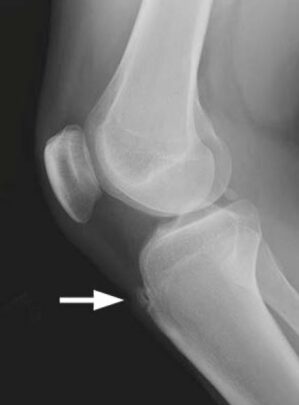
Conclusion
In conclusion, patellar tendinopathy is a common knee condition that can cause persistent pain and limit participation in daily activities and sports. This condition usually results from a combination of intrinsic and extrinsic factors, including anatomical abnormalities, muscular imbalances, repetitive sports activities, and individual factors such as age and injury history.
Symptoms of patellar tendinopathy primarily include pain around or behind the kneecap, patellar tendon tenderness on palpation, joint stiffness, and decreased muscle strength. These symptoms may be exacerbated by certain activities and may vary in intensity depending on the severity of the condition.
The diagnosis of patellar tendinopathy is based on clinical examination, which may be supplemented by imaging tests such as x-rays, ultrasound or MRI to confirm the diagnosis and assess the extent of damage.
Treatment for patellar tendinopathy generally aims to relieve pain, reduce inflammation, and restore normal function to the tendon. Conservative approaches such as relative rest, physical therapy, muscle strengthening exercises, and treatment modalities such as extracorporeal shock wave therapy may be effective in many cases. In more serious cases or cases refractory to conservative treatment, surgical intervention may be considered.
References
- Lian OB, Engebretsen L, Bahr R. Prevalence of jumper’s knee among elite athletes from different sports: a cross-sectional study. Am J Sports Med. 2005 Apr;33(4):561-7. [ PubMed ]
- Fredberg U, Bolvig L. Jumper’s knee. Review of the literature. Scand J Med Sci Sports. 1999 Apr;9(2):66-73. [ PubMed ]
- Ferretti A. Epidemiology of jumper’s knee. Sports Med. 1986 Jul-Aug;3(4):289-95. [ PubMed ]
- Khan KM, Cook JL, Kannus P, Maffulli N, Bonar SF. Time to abandon the “tendinitis” myth. BMJ. 2002 Mar 16;324(7338):626-7. [ PMC free article ] [ PubMed ]
- Tibesku CO, Passler HH. [Jumper’s knee–a review]. Sportverletz Sportschaden. 2005 Jun;19(2):63-71. [ PubMed ]
- van der Worp H, van Ark M, Roerink S, Pepping GJ, van den Akker-Scheek I, Zwerver J. Risk factors for patellar tendinopathy : a systematic review of the literature. Br J Sports Med. 2011 Apr;45(5):446-52. [ PubMed ]
- Rudavsky A, Cook J. Physiotherapy management of patellar tendinopathy (jumper’s knee). J Physiother. 2014 Sep;60(3):122-9. [ PubMed ]
- Lian O, Engebretsen L, Ovrebø RV, Bahr R. Characteristics of the leg extensors in male volleyball players with jumper’s knee. Am J Sports Med. 1996 May-Jun;24(3):380-5. [ PubMed ]
- Durcan L, Coole A, McCarthy E, Johnston C, Webb MJ, O’Shea FD, Gissane C, Wilson F. The prevalence of patellar tendinopathy in elite academy rugby: a clinical and imaging study. J Sci Med Sports. 2014 Mar;17(2):173-6. [ PubMed ]
- Schwartz A, Watson JN, Hutchinson MR. Patellar Tendinopathy . Sports Health. 2015 Sep-Oct;7(5):415-20. [ PMC free article ] [ PubMed ]
- Almekinders LC, Temple JD. Etiology, diagnosis, and treatment of tendonitis: an analysis of the literature. Med Sci Sports Exercise 1998 Aug;30(8):1183-90. [ PubMed ]
- Fornaciari P, Kabelitz M, Fucentese SF. [Jumper’s Knee]. Praxis (Bern 1994). 2018 Apr;107(9-10):513-519. [ PubMed ]
- Dixit S, DiFiori JP, Burton M, Mines B. Management of patellofemoral pain syndrome. Am Fam Physician. 2007 Jan 15;75(2):194-202. [ PubMed ]
- Malliaras P, Cook J, Purdam C, Rio E. Patellar Tendinopathy : Clinical Diagnosis, Load Management, and Advice for Challenging Case Presentations. J Orthop Sports Phys Ther. 2015 Nov;45(11):887-98. [ PubMed ]
- Rath E, Schwarzkopf R, Richmond JC. Clinical signs and anatomical correlation of patellar tendinitis. Indian J Orthop. 2010 Oct;44(4):435-7. [ PMC free article ] [ PubMed ]



